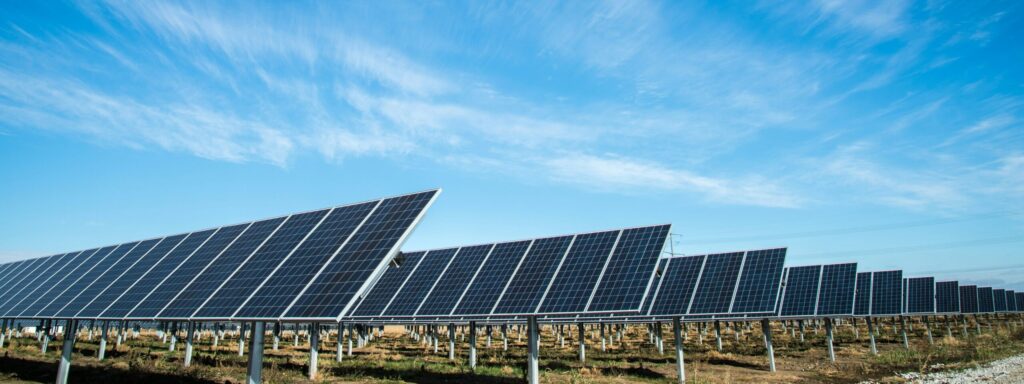If Net Zero enthusiasts are to get anywhere, or at any rate if they are to get anywhere they want to be, it will be essential to rely in large part on nuclear energy. Which interestingly seems to be gaining ground in public opinion generally; Ruy Teixeira writes on The Liberal Patriot that “Americans Love Nukes!”, with a new Gallup poll showing that in under a decade positive views of nuclear have gone up 17 points and negative views down by 19, taking the net from minus 10 to plus 27. For once something that unites people across partisan and ideological divides. Yet Heatmap warns that “Trump Is Sabotaging His Own Nuclear Agenda/ The president says he want to bring back nuclear – but he’s preparing to eviscerate an office crucial to making that happen.” Which could be true although the odd enthusiasm of modern environmentalists for big government makes us wonder.
According to Robinson Meyer in that Heatmap piece, there is a certain amount of administrative and intellectual chaos in the Trump administration. And we’re not hard to persuade on that score. We’re less persuaded by this bit:
“Bringing back nuclear power is the explicit goal. But when it comes to energy policy, announcing an aim is not the same as getting it done. Just ask the Biden administration, which struggled to build EV chargers despite $7.5 billion in funding. It will take a lot of work to execute a project as big and complex as building new nuclear reactors across the United States, and simply wanting to do it will not make it happen.”
Government is unwieldy no matter who’s in power and good intentions don’t get the dogs fed. But nuclear is a proven technology unlike EVs and their huge missing infrastructure network from generation to delivery, and the Biden administration is unlikely to be held up to future generations as an exemplar of how to make the public sector function plausibly.
On the other hand, Meyer suggests that Energy Secretary Chris Wright has been busy on other files this spring, including much foreign travel, and that when he comes back he may recognize the problem and tackle it. The problem, in Meyer’s view, being that:
“The United States has started only four new nuclear projects this century. All but one of those efforts have received — or are now in the process of applying for — a federal loan guarantee by the Loan Programs Office, the Energy Department’s in-house bank. The Loan Programs Office, or LPO, provides long-term financing to major American clean energy and industrial projects. The LPO is a small office — just a few hundred people — but it was a vital tool of the Biden administration’s clean-energy industrial strategy. The first Trump administration also used it to boost nuclear energy…. Despite that track record, commissars at the Department of Government Efficiency are now trying to gut LPO.”
And all right-, or rather left-thinking persons despise the DOGE as they rally the public around the banner of red tape and link those who would cut government waste with Soviet planners for some odd reason. But nuclear energy has been hamstrung in the United States for at least 45 years due to a weird paranoia about its safety especially among progressives that has made permits almost impossible to obtain.
As Meyer notes, Wright is a fan of small modular reactors. And they do sound cool though as always we are at least a little bit wary of anything trendy. But if smaller, more decentralized nuclear plants are the way of the future, centralized federal funding on the New Deal model might not be as crucial to them as many progressives assume. Especially as Meyer too notes the surge in public and political support:
“Earlier this month, a new Gallup poll found that the U.S. public’s support for nuclear energy has hit 61% - just one percentage point short of its all-time high. That has come as Democratic politicians – especially in swing states – have become more supportive of nuclear energy.”
He also draws attention to a curious paradox on this file of long standing:
“nuclear power has never succeeded anywhere – not in the United States, not in France or Japan, and not in Russia or China – without huge amounts of public subsidy. We are talking about a type of energy that is climate-friendly, that helps build a college-educated and unionized workforce, and that basically always requires government support. Yet nuclear energy has historically been beloved by Republicans and hated by Democrats.”
For our part we think it has something, not very rational, to do with attitudes toward nuclear weapons.
Here Teixeira sheds interesting light, observing that nuclear power:
“is a clean, carbon-free energy source in an era when the center-left is obsessed with eliminating carbon emissions. Moreover, nuclear can provide the necessary firm, baseload power to the grid that intermittent renewables (wind and solar) cannot. So where is – or has been – the love? The answer goes back to the origins of the modern environmental movement and the apocalyptic strain that always lurked there, ready to be activated by an issue like nuclear power and, later, climate change. Here you need to make the acquaintance of a man named William Vogt.”
Must we really? Well, yes, because ideas have consequences. And it turns out that Vogt’s dystopian 1948 Road to Survival was the best-selling book ever on environmental matters until Rachel Carson’s 1962 Silent Spring, among other things a Book of the Month Club selection also published in condensed version by Reader’s Digest and widely adopted as a textbook. And in it Vogt raved that we were worse than parasites because our superior intelligence made us even more destructive, “in an overpeopled, atomic age, with much of the world a shambles.”
Perhaps you thought the world only became a shambles with climate change. But actually pollution and casual habitat destruction were far more serious problems then than they were a half-century later, partly because people did listen to this kind of alarmism, filter out much of the absurdity, and act on the more sensible warnings. Alas, one piece of absurdity not filtered out was the widespread conviction that “atomic” was part of the problem not the solution, which afflicted so many thinkers of the E.F. Schumacher Small is Beautiful sort in ugly ways. For, as Teixeira also says:
“From the beginning, opposition to nuclear power was closely linked to opposition to nuclear weapons. The same things that led people to demonstrate against nuclear bombs – deadly radiation and catastrophic explosions – drove people to oppose nuclear power. Surely those plants, since they relied on the same technology that produced nuclear explosions, could easily pollute the environment with radiation and potentially destroy surrounding communities.”
Or not. Even the worst accident in the U.S., at Three Mile Island, was harmless except to the industry’s reputation and growth. And the Soviet accident at Chernobyl was, or should have been, an indictment of Soviet planning not of nuclear energy in theory. (Their hospitals were awful too.) As people may finally be realizing, if they even remember either incident.
As people move forward on this file, we would also argue in response to Meyer that just because the government has successfully imposed unionization on the older fading nuclear power system, as it did on such once-triumphant U.S. industries as steel-making and automobiles, is no reason to assume it can or should do it on a more modern, flexible wave of such plants. Which does seem to be coming, with broad support.
The U.S., in fact, needs nuclear less than many nations because it is a hydrocarbon superpower. But there are many advantages to this sort of power generation, from geopolitical to economic to, yes, environmental. So maybe something good is happening on this file even if Orange Man Bad.


